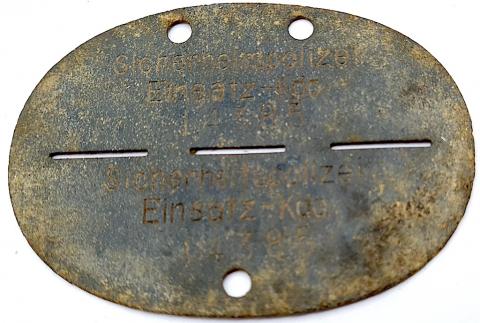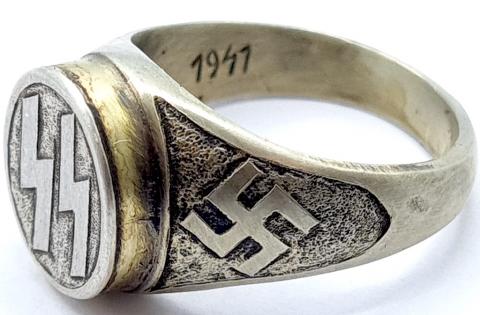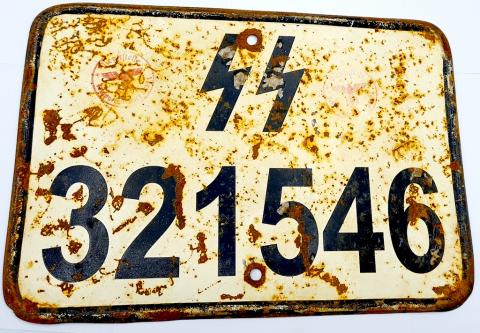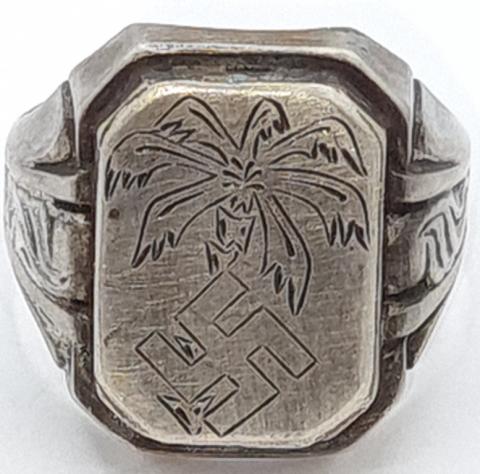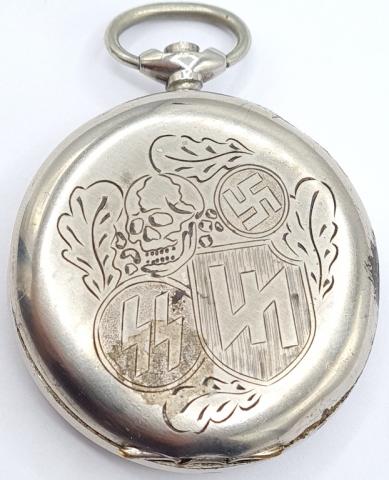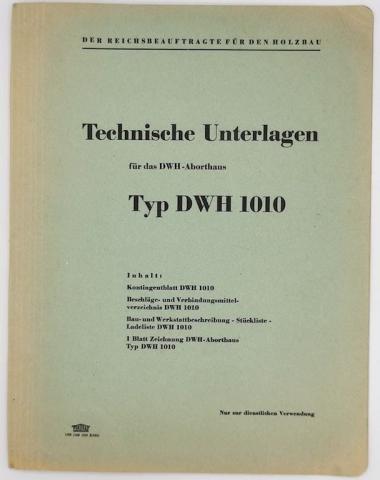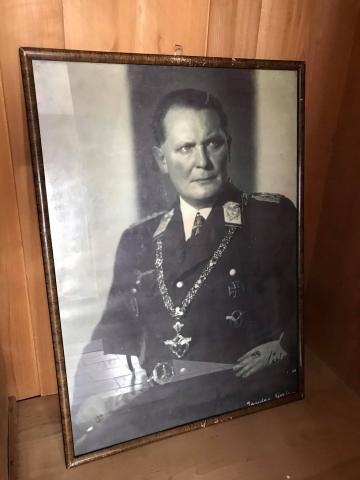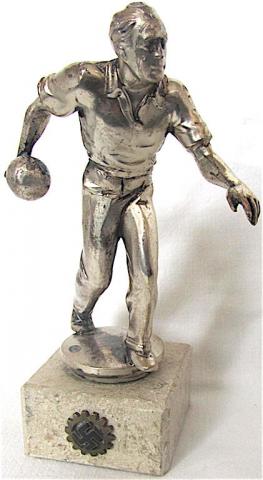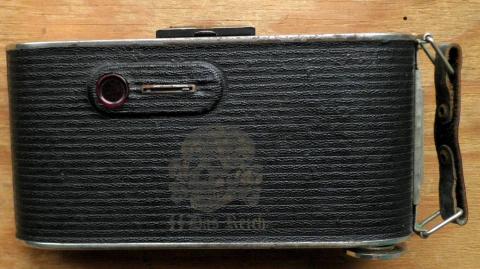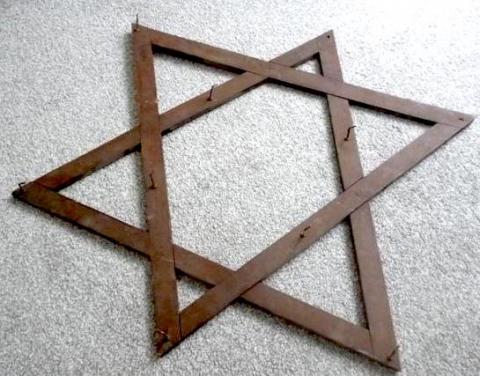T4 program Jewish mass killing police squad Sicherheitspolizei Einsatzkommando Einsatzgruppen dogtag
T4 program Jewish mass killing police squad Sicherheitspolizei Einsatzkommando Einsatzgruppen dogtag
Product
T4 program Jewish mass killing police squad Sicherheitspolizei Einsatzkommando Einsatzgruppen dogtag
extremely rare, in this condition.
unique and high importance piece of the history of the holocaust.
The Einsatzgruppen were formed under the direction of SS-Obergruppenführer Reinhard Heydrich and operated by the Schutzstaffel (SS) before and during World War II. The Einsatzgruppen had their origins in the ad hoc Einsatzkommando formed by Heydrich to secure government buildings and documents following the Anschluss in Austria in March 1938. Originally part of the Sicherheitspolizei (Security Police; SiPo), two units of Einsatzgruppen were stationed in the Sudetenland in October 1938. When military action turned out not to be necessary due to the Munich Agreement, the Einsatzgruppen were assigned to confiscate government papers and police documents. They also secured government buildings, questioned senior civil servants, and arrested as many as 10,000 Czech communists and German citizens. From September 1939, the Reichssicherheitshauptamt (Reich Security Main Office; RSHA) had overall command of the Einsatzgruppen.
As part of the drive by the Nazi regime to remove so-called "undesirable" elements from the German population, from September to December 1939 the Einsatzgruppen and others took part in Action T4, a program of systematic murder of persons with physical and mental disabilities and patients of psychiatric hospitals. Aktion T4 mainly took place from 1939 to 1941, but the killings continued until the end of the war. Initially the victims were shot by the Einsatzgruppen and others, but gas chambers were put into use by spring 1940.
